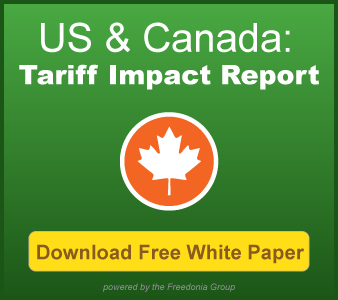Start the Presses! The US Overturns Newsprint Tariffs
by Sarah Schmidt
September 17, 2018
On August 29, the US International Trade Commission (USITC) announced that it was overturning duties placed on Canadian uncoated groundwood paper – “newsprint”, the grade of paper used to print newspapers – enacted earlier in 2018. The move was a breath of fresh air for the already struggling newspaper industry, which had to contend with newsprint price increases of around 30% since the establishment of the tariff.
The US and Canada both have large paper industries, so it’s only natural that paper would become caught in the crossfire of the escalating trade war between the two countries. Both sides have placed tariffs on a number of paper and paperboard products.
However, the newsprint tariff was particularly damaging to US newspaper publishers. The US is much more dependent on Canada for imports of newsprint than of other paper grades – imports from Canada are about five times as large as exports to Canada. Import dependence is particularly strong in the US Northeast and Midwest, which are closer to Canadian sources in Ontario and Quebec than US sources in the Pacific Northwest.
Newsprint Tariffs Driven by Norpac
One might ask why the US enacted tariffs on newsprint in the first place, if the results ended up so damaging to the newspaper industry. The answer lies with one single company – North Pacific Paper (Norpac), a newsprint manufacturer based in Washington state. The company, which was purchased by New York-based private equity firm One Rock Capital Partners in late 2016, lobbied the USITC for the tariffs on its own.
A lone company lobbying for tariffs is relatively rare; usually concerned producers band together through an industry organization to have more clout. In this case, industry trade groups such as the American Forest & Paper Association actually opposed the measure. But it worked anyway – the USITC approved the tariffs in January 2018, and Norpac was able to reap the benefits of higher prices, restarting an idle newsprint mill in May.
Newspaper Industry Wins Out on Tariffs
However, the “success” of Norpac and other newsprint producers was short-lived. As newsprint prices continued to rise through the year, the plight of the ailing newspaper industry garnered more and more attention. This began to translate into pressure from the US Congress, which convinced the USITC to reconsider the matter. In the end, the five trade commissioners voted unanimously to overturn the tariffs.
What does this reversal mean for other tariffs and other industries? On one hand, it’s heartening that common sense prevailed in the end, and that a tariff that had such obvious economic downsides for the US was repealed. On the other hand, the outcome may have been different if there had been more industry support behind the tariff, or if the victim industry was one less sympathetic than the moribund newspaper industry. When it comes to tariffs, economics is often trumped by politics.
Want to Learn More?
Interested in learning more about North American tariffs and industries they'll impact the most? Download "US & Canada: Tariff Impact Report", a white paper from the Freedonia Group.
About the Author:
Kent Furst is the Manager of Polymers & Packaging at the Freedonia Group, where he supervises the production of market studies on the chemicals, plastics, coatings, adhesives, flexible packaging, and rigid packaging industries.
Have unique research needs?
Freedonia Custom Research listens intently to your needs and objectives. Then we work diligently to define and deliver a service to meet them.Subscribe to Our Blog
Stay up to date with the latest information about new market research and news in areas relevant to your business from our analysts and team members.Freedonia Group Blog Subscription
Provide the following details to subscribe.
